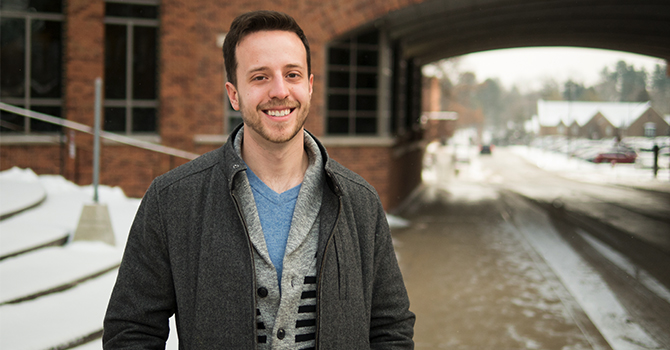Uncovering What Makes Some Places Healthier Than Others

Travis Donahoe
MPH Candidate, Health Management & Policy; Scholarship Recipient, Natalie and Jack Blumenthal Internship Fund and Health Management and Policy Scholarship Fund
I grew up in Huntington, West Virginia. Like most of Appalachia, West Virginia suffers dramatic disparities in health compared to the rest of the United States. These include higher mortality rates from diseases like heart disease and cancer, higher rates of risk factors like obesity and smoking, and shortages in primary care physicians and mental health providers.
When I started college at Marshall University in Huntington, I quickly got interested in investigating these disparities through research. I worked on a range of research projects, studying the determinants of obesity in Appalachia, looking at whether the quality of public schools in the Appalachian region was related to population health, and evaluating a breast cancer awareness intervention in rural West Virginia.
I was interested in coming to Michigan Public Health for grad school because I knew there were some really awesome health economists here.
At Marshall, the faculty are super accessible. I didn't expect to find that at a major research university like Michigan. However, when I came here for Admitted Students Day, the faculty were so friendly and approachable. They knew I wanted a research assistantship, and they set that up before I started. The school was also very generous with scholarship funding, which helped make it possible for me to be here.
I've had the opportunity to work with some amazing researchers here, including Zoe McLaren, assistant professor of health management and policy; Nancy Fleischer, assistant professor of epidemiology; and Edward Norton, professor of health management and policy and economics. I feel fortunate that I get to go to classes and learn all these things, and then I get to directly apply it in my research.
Nancy and I recently looked at smoke-free air laws in Appalachia. The idea came from a project I did for a public health policy class, and we were able to turn that into a paper, "Key Factors Inhibiting Legislative Progress Toward Smoke-Free Coverage in Appalachia," which was recently published in the American Journal of Public Health.
In Appalachia, only about 20 to 25 percent of the population lives in an area with comprehensive smoke-free laws—which prohibit smoking in bars, restaurants, and workspaces—compared to about 50 percent nationwide. There are several Appalachian states where tobacco is primarily grown, and when tobacco started to be regulated, a lot of preemptive pro-tobacco legislation was pushed through that is still keeping cities and counties in some states from being able to pass strong smoke-free laws.
In the paper, we also discussed the effectiveness of different approaches to advocating for smoke-free laws in this part of the country. For example, it's not effective to run ads that stigmatize smokers because a lot of people grew up around people who worked in the tobacco industry. On the other hand, ads that emphasize that children should have the right to go to restaurants that are smoke-free might be more effective.
I would like to be a professor, and I'm currently applying to PhD programs in economics, with a focus on health care economics. I would be interested in eventually going back to work in Appalachia. Most importantly, I am interested in health disparities and why some places are healthier than others. I want to focus on issues that affect real people, and how to make health services delivery more effective in places that struggle with health disparities.
- Learn more about Health Management and Policy at Michigan Public Health.
- Support students like Travis at Michigan Public Health.
